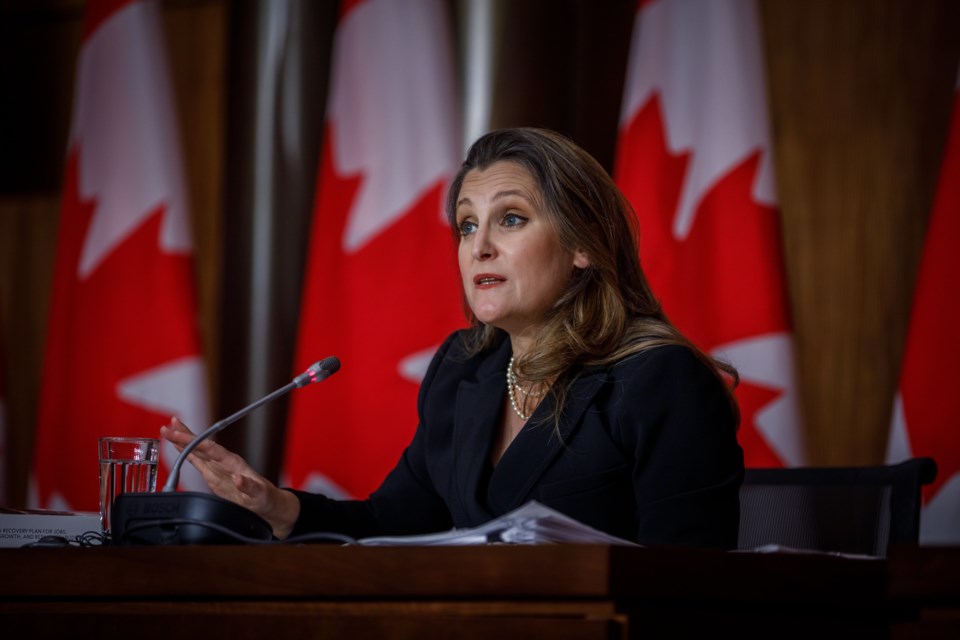The prime minister and minister of finance work in a building 4,427 kilometres from my office in Surrey. Judging by the federal budget they released Tuesday, they’re even further away than that from understanding the challenges facing construction contractors, small business owners, entrepreneurs and everyday Canadians.
The realities facing working Canadians are equal parts simple and troubling. First, in every province, our health care system is collapsing. Delays in treatment, lack of access to care and the shortage of doctors and nurses are crippling the system.
Second, our rail, port and road infrastructure has failed to keep pace with growth in our communities and in our economy, so much so that the federal government’s own task force reported last fall that our supply chain is so bad that Canada’s reputation as a reliable and trusted trading partner is at risk, costing us investment and jobs.
Third, we are in the middle of an unprecedented housing affordability challenge. Last summer, the Canadian Mortgage and Housing Corporation (CMHC) reported that the last time housing was affordable in Canada was two decades ago. That’s a full generation missing out on buying a home.
Finally, there is the decline in public order and safety, and the increasing incidents of random violent attacks that we are witnessing in communities across Canada. People feel less safe because, frankly, the streets in so many of our communities are less safe.
Reading through the 270-page federal budget, A Made-in-Canada Plan: Strong Middle Class, Affordable Economy, Healthy Future, is a little like going on a treasure hunt and ending up not finding any treasure. It’s not just the middle class left wanting, it’s all Canadians, and there is nothing affordable about the path Canada’s economy is on.
Bad ideas have currency and in today’s political climate there is one bad idea that effectively goes unchallenged in the corridors of power in Ottawa – that we can tax and spend our way to affordability and a stronger economy.
Canadians were told by the finance minister that our national debt will soon reach $1.3 trillion dollars – a number so large that it’s hard to grasp. An easier way to put this in perspective is that just the interest on the debt is $44 billion annually and is projected to increase to $50 billion annually in a few years. That’s nearly twice what the B.C. government spends on running our health care system every year.
While the government claims to be concerned about the affordability pressures working Canadians and small businesses are feeling, there was no tax relief for individuals or small businesses.
The new incentives being rolled-out are effectively focused on a tiny sliver of Canadian businesses – clean tech, which according to the Business Council of BC, accounts for about three per cent of our economy. Too bad for the other 97 per cent of businesses that we rely on for jobs.
We’re left with an economy that is growing so slowly that the OECD recently reported that from 2020 to 2030, Canada’s will rank dead last among 38 advanced economies. At a projected 0.7 per cent annual rate of growth in income per capita, it will take four generations, a full century, for incomes to double in size. The sad reality facing Canadians is that we can no longer make the promise that the next generation will be better off than this one.
Red tape continues to choke off investment in Canada – outbound investment has exceeded inbound investment in Canada every year since 2014. The federal government is blind to the fact that they are a major contributor to this sorry state of affairs. It was this government that passed the Impact Assessment Act in 2019 despite clear evidence that it would do nothing more than add complexity, confusion and cost to the approval of major projects.
The solution offered up in the budget: create a plan to increase efficiency and permitting of major projects. All this while the federal government’s lawyers were standing in front of the Supreme Court of Canada just weeks ago, defending the Act.
For those looking to see an improvement in the World Bank’s assessment in 2020, ranking Canada #64 in the length of time it takes to approve and permit construction projects, the wait continues. Construction, which drives about 10 per cent of our economy, gets hardly a mention.
We all recall how weather events demonstrated so clearly the fragility of our supply chain – historic floods in B.C. cut off Canada’s largest port (Vancouver) from the rest of the country by road and rail for a full week in 2021.
The federal government’s solution: $27 million to establish an office to coordinate supply chain and $25 million for government to gather supply chain data. For those hoping that the failing grade received by the Port of Vancouver from the World Bank – 368 out of 370 ports around the world in terms of performance – will improve, there’s not much there.
For Canadians looking to Ottawa to unleash the potential of entrepreneurs, investors, businesspeople, and young workers dreaming about the opportunities the future holds, it’s difficult not to put down the budget document concluding that Ottawa is fighting against them.
Chris Gardner is the president of the Independent Contractors and Businesses Association (ICBA) of British Columbia.




